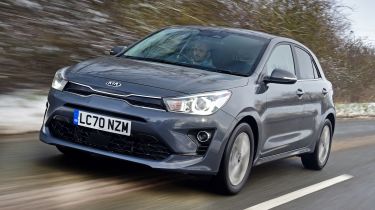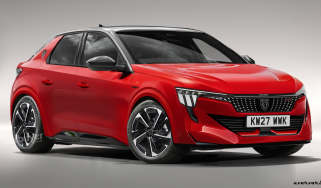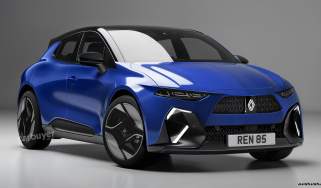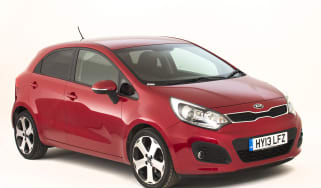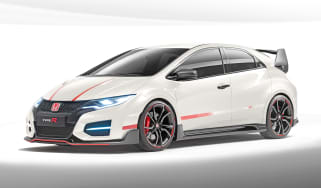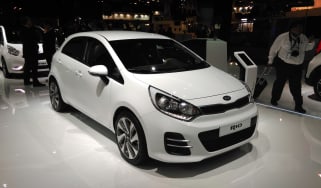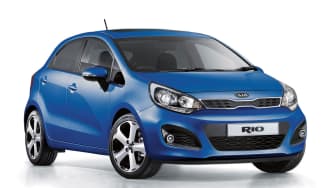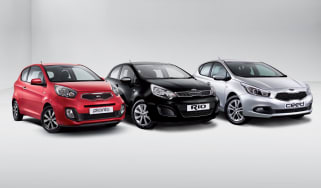Kia Rio hatchback review (2017-2023)
"The Kia Rio is a practical small car that’s cheap to run, but it’s a very bland choice"
Pros
- Long warranty
- Cheap to run
- Large boot
Cons
- Dull steering
- Bland styling
- Strength of rivals
The Kia Rio supermini doesn’t shine the brightest in a busy field of competitors, but instead shows that it is the sensible and pragmatic choice for those needing reliable transportation at a bargain price. Previously, the Rio lacked the polished attributes of others in its class, however improvements have been made in the latest generation.
The Rio is a rival for popular models such as the Ford Fiesta, Renault Clio, Vauxhall Corsa, SEAT Ibiza, Hyundai i20 and Skoda Fabia, as well as the Honda Jazz and Toyota Yaris. The Rio’s niche within this market is the fact it comes with an outstanding seven-year warranty, so it will really appeal to cash buyers who want to keep the car for years to come. It’s also roomy inside for its size and really well equipped.
 Top 10 most reliable cars 2024
Top 10 most reliable cars 2024
The Rio falls behind rivals in most areas, though. If you want something that’s fun to drive then a Ford Fiesta or SEAT Ibiza will be a better choice, while the Skoda Fabia is more practical. The Honda Jazz and Toyota Yaris offer hybrid power, while the Corsa is even available as an electric car.
Engine options are simplified to two petrols in three power outputs, with a 1.2-litre producing 83bhp starting off the range. The entry level engine is only available in the ‘1’ and ‘2’ trim levels in fact, it’s the only choice if you go for the entry ‘1’ trim.
More reviews
In-depth reviews
Used car reviews
The more powerful option is a smaller 1.0-litre petrol engine that has the help of turbocharging, it produces 99bhp. For even more power 48-volt mild-hybrid tech is added to the 1.0-litre turbo petrol engine on ‘3’ trim and above, boosting power from 99bhp, to 118bhp.
There is no automatic gearbox available on the Kia Rio, however the clutch is easy to use, with the most powerful engine getting Kia’s iMT manual gearbox, which has clutch activation by wire rather than a mechanical connection. This makes it lighter to use and gives a small boost to efficiency.
All the engines offer good fuel economy with even the entry 1.2-litre petrol engine returning 49mpg, and the more powerful 1.0-litre turbo engine achieving 52mpg.
Further adding to the Rio's common-sense credentials is its spacious interior. It's now available as a five-door only, so access to the front and rear seats is easy and nobody on board is likely to feel claustrophobic. Nor is your luggage likely to complain of being cooped up – there's 325 litres of boot capacity, which is about 10% more than a Fiesta.
Even the Rio's trim levels are sensibly named, dubbed simply 1, 2, and 3, although the range-topping model is known as GT-Line S. Even the entry-level 1 trim includes air-conditioning, which hasn’t always been standard on the most basic cars in this class, and 2 versions onwards get a new eight-inch touchscreen. It should be noted that you can only choose the most powerful petrol engine in the 3 trim and above. We recommend the mid-range 2 in 99bhp 1.0-litre form as a good all-rounder.
The Rio offers car buyers a no-nonsense approach to motoring and while it isn’t class-leading many owners will appreciate the simplified approach. Instead of attempting to excel in one particular area as a way of enticing interest in the Kia Rio, the carmaker has instead decided to aim for those looking to buy with their head instead of their heart. Add to this a long warranty, and 3rd place in our 2022 Driver Power owner satisfaction survey, with Kia also taking a 3rd place for best car brands and it’s clear the majority of owners are very content with the car and the brand.

